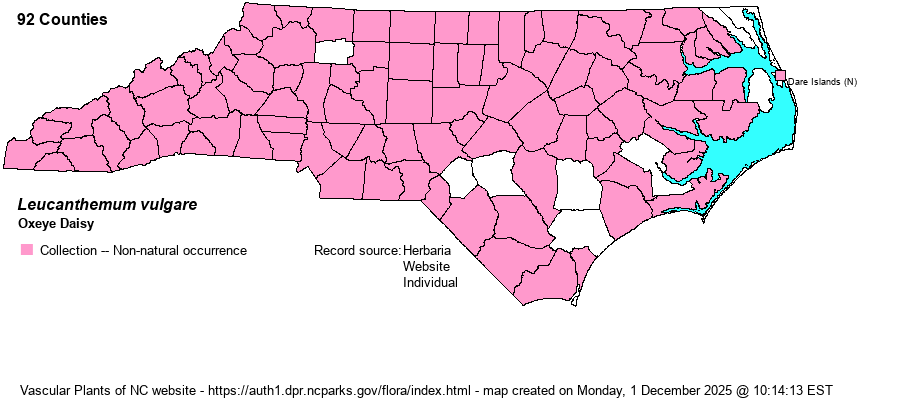| Author | Lamarck | |
| Distribution | Throughout the state, also collected at Nags Head Woods on the Outer Banks of Dare County.
Native of Eurasia; in N.A. throughout. | |
| Abundance | Common to abundant, except uncommon to rare in the Sandhills proper and rare on the Outer Banks. This is one of the most common and conspicuous of the alien species in the state. | |
| Habitat | Roadsides, fields, meadows, pastures, yard weed, campus weed, clearings. Thankfully, the species is found almost solely in disturbed sites, such that -- despite millions and millions of plants in the state -- it seems to not impact native species to any degree. | |
| Phenology | Flowering and fruiting April-October. | |
| Identification | Oxeye Daisy is familiar to most folks, with its bright white rays and bright yellow disks. The heads are much larger than any of our asters, fleabanes, or other white-rayed composites. See also L. lacustre, which is now very rare or absent in the state. | |
| Taxonomic Comments | Known as Chrysanthemum leucanthemum in RAB (1968) and many other older references.
| |
| Other Common Name(s) | | |
| State Rank | SE | |
| Global Rank | GNR | |
| State Status | | |
| US Status | | |
| USACE-agcp | UPL link |
| USACE-emp | UPL link |

